Vietnamese cuisine is likened to a delicate symphony of flavors, colors, and emotions, reflecting the cultural diversity and rich history of each region in the country. From North to South, each area offers unique culinary experiences, with differences in ingredients and spices creating distinctive, unforgettable dishes. This makes Vietnamese cuisine not only beloved by the Vietnamese people but also highly regarded by international friends.
So, have you tried all the famous specialties from the three regions of Vietnam yet? If not, then take note of the recommendations from FoodVietnamese for you right here! Join us in exploring the delicious Vietnamese dishes renowned across the world!
Phở
Phở has long been a name that has established itself on the world culinary map. There are many types of phở, but the most renowned one is Phở Bò (Beef Phở). A bowl of phở with its distinctive aroma, white, soft noodles submerged in hot broth, tender and fragrant beef brisket, is extremely flavorful. Adding a bit of chewy beef tendon, slightly pink rare beef, along with the green color and fresh aroma from scallions and other accompanying herbs, makes it even more delightful.
The clear broth has a natural sweetness from beef bones simmered for many hours, enhanced with rich and delicious seasoning. To enjoy phở properly, you need to squeeze in some lemon juice and add a bit of chili, making the bowl of phở irresistibly flavorful, with a touch of sourness and spiciness.

Bun Bo Hue
No matter where you are in Vietnam, you can always enjoy Bun Bo Hue. This dish is widely loved for its rich flavor coming from meticulously simmered beef and beef shank, infused with lemongrass overnight. Bun Bo Hue is served with fresh herbs, bean sprouts, and banana blossoms. The presentation of the dish itself is adorned with plenty of visually appealing herbs, never becoming monotonous. If you have the chance to visit Hue, be sure to quickly indulge in Bun Bo to experience this unforgettable taste.
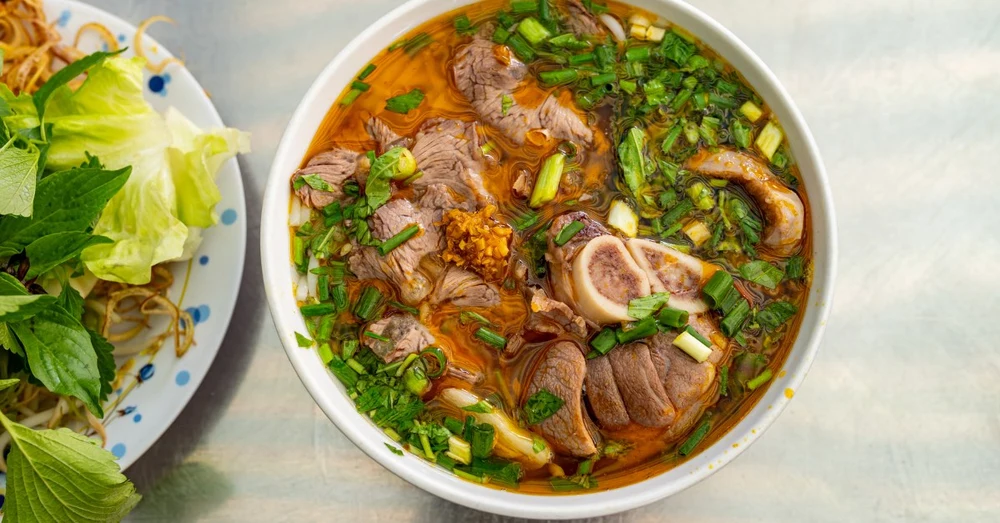
Vietnamese Baguette (Bánh Mì)
Throughout the ups and downs of history, Vietnamese baguette has not only deeply engraved itself in the hearts of the Vietnamese people but also transcended national borders, leaving a mark on the global culinary scene.
The irresistibly appealing point of this dish lies in the perfect crispiness of the baguette. With each bite, you will experience a harmonious blend of meat, eggs, sausage, and pâté inside, complemented by various toppings such as cucumber, cilantro, and pickled carrots, creating an exquisite flavor. It is an irresistible experience that will make you bite into the next crunchy piece continuously until the baguette is finished. How about you, do you have a habit of having a baguette every morning like this?
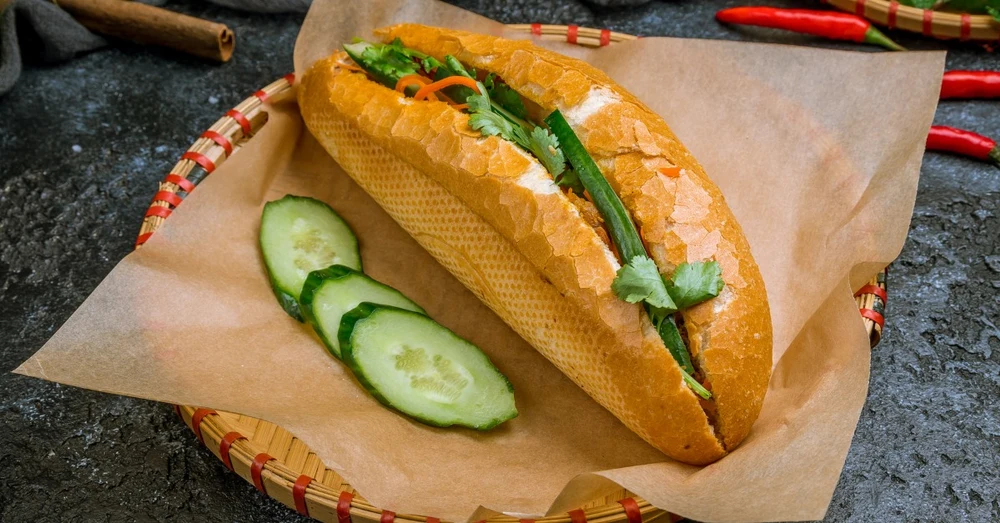
Vietnamese Spring Rolls (Gỏi cuốn)
Vietnamese spring rolls are not only delicious but also visually appealing with a soft rice paper layer wrapping a delicate combination of shrimp, boiled pork belly, fresh vermicelli, and a variety of raw vegetables such as coriander, mint, spring onion, cucumber, carrots… All the ingredients are tightly rolled together, offering a refreshing taste, easy digestion, and rich nutrients from the fresh greens.
An interesting aspect of enjoying Vietnamese spring rolls is the variety of dipping sauces available. Depending on the region and personal preference, there are different types of dipping sauces to choose from. Hoisin sauce, chili fish sauce, peanut butter sauce, or fermented shrimp paste… are all excellent choices to enhance the flavor of the spring rolls.
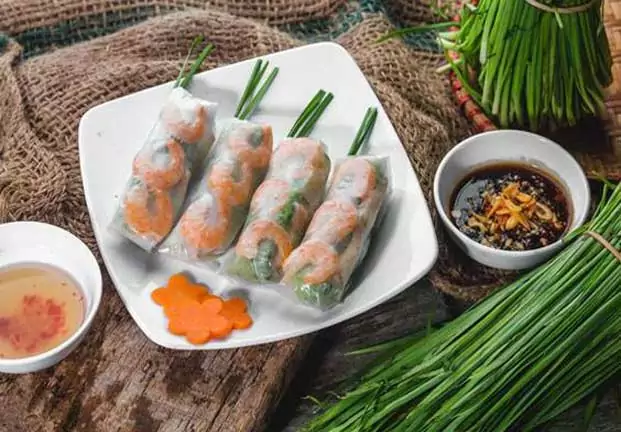
Bun dau mam tom
Bun dau mam tom is a fascinating and peculiar combination of flavors and scents, often sparking debate among foreign visitors with its contrasting characteristics of “smell like hell, taste like heaven.”
Mam tom possesses a distinct, intense odor that may initially repel many diners. However, they are soon captivated and enchanted by the seductive flavor that this dish offers.
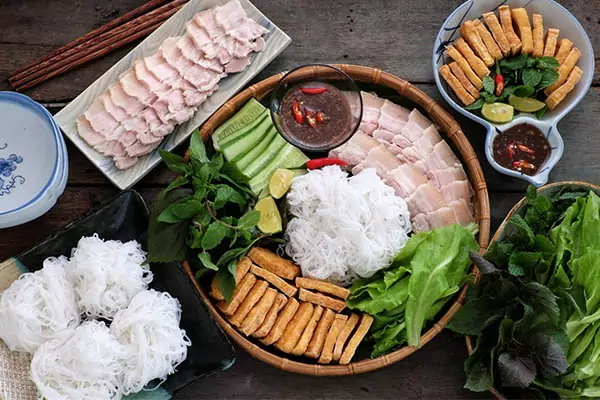
In addition to shrimp paste, a typical bowl also includes vermicelli and various raw vegetables such as lettuce, cucumber, mint, and perilla as essential components. The accompanying toppings consist of fried tofu, boiled pork trotters, fermented pork roll, boiled pork knuckles, fermented pork sausage, and blood pudding…
The diverse combination of ingredients creates a rich dish with an irresistible flavor, making it impossible to stop eating once you have tried it.
Broken rice (Cơm tấm)
Broken rice (Cơm tấm) is considered a symbol of Saigon cuisine. It is made from broken rice grains that, when cooked, become perfectly tender and not too dry. The variety of toppings such as grilled pork ribs, shredded pork skin, steamed egg cake, pickled vegetables, and chili garlic fish sauce adds an irresistible flavor that also creates a distinctive and unmistakable character.
Broken rice (Cơm tấm) has spread across all regions of Vietnam with many unique variations while still retaining its basic ingredients. It is considered one of the quintessential dishes of Vietnam.
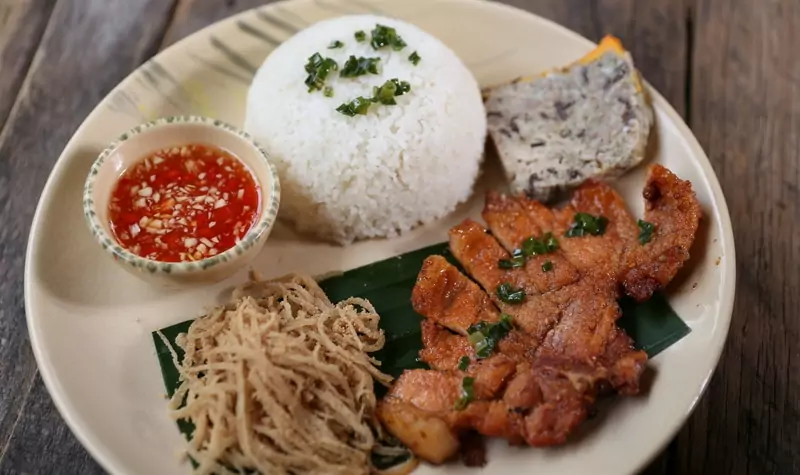
Quang Noodles (Mì Quảng)
After enjoying all the delicious dishes from the North to the South, be sure to try Quang Noodles from Da Nang and Quang Nam. This dish is often sold at small roadside stalls in the ancient town of Hoi An.
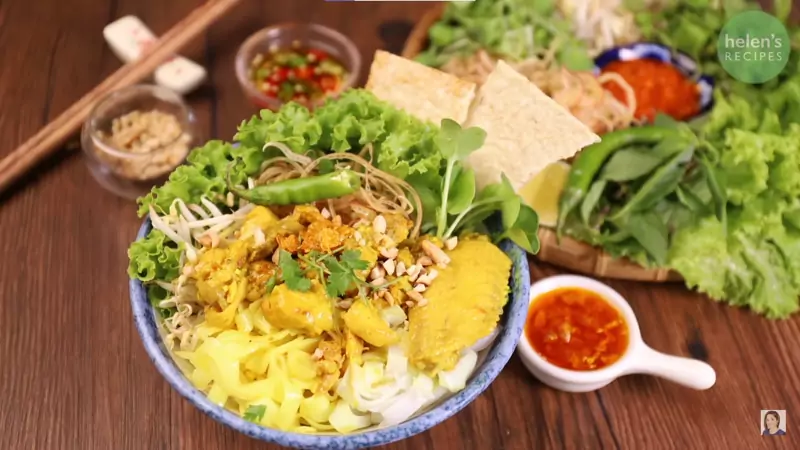
Quang noodles have a distinctive bright yellow color, not as glossy as Cao Lau, and have a chewy texture. The toppings for Quang noodles are typically made from pork, shrimp, frog, and boiled quail eggs, served with broth made from pork bones. Additionally, the dish is garnished with roasted peanuts, chopped green onions, red chili, and various aromatic herbs to enhance its flavor. It is served with fresh vegetables such as basil, bean sprouts, coriander, fresh lettuce, young mustard greens, Vietnamese coriander, chopped green onions, and thinly sliced banana flowers. To fully enjoy Quang noodles, it must be eaten with stewed chili and small green chilies for the authentic taste.
Bánh xèo
Bánh xèo, originating from the Mekong Delta, has long become a symbol of Vietnamese cuisine and is loved by many international tourists.
The crispy pancake shell is filled with a simple yet delicious combination of shrimp, pork, bean sprouts, and mung beans, creating an enticing flavor.
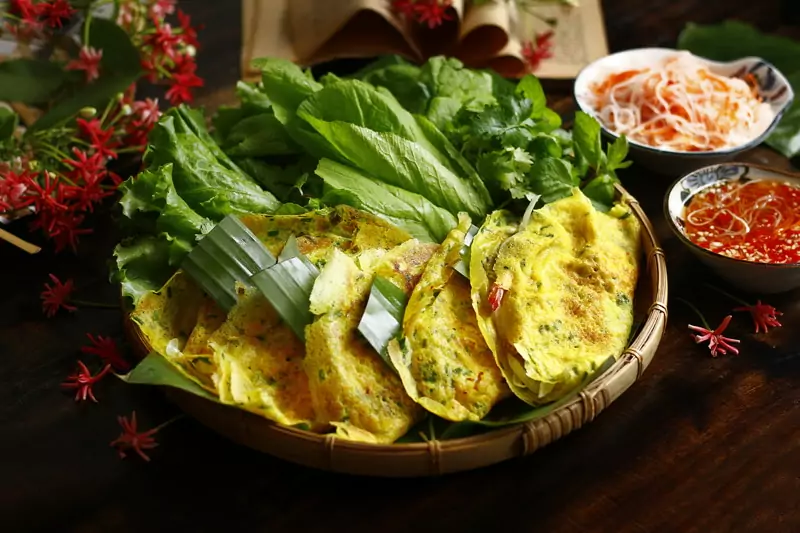
In addition to some common basic ingredients, each region has its own unique way of making and filling Bánh xèo. In the South, Bánh xèo is usually large with a thin, crispy shell, and the filling may include coconut shoots or sesbania flowers. Conversely, in the Central region, Bánh xèo is typically smaller with a thicker, crispier shell, and the filling often contains various types of seafood.
Most people love Bánh xèo for its crispy texture, combined with mustard greens, assorted fresh herbs, and sweet and sour fish sauce. In some places, Bánh xèo is wrapped in rice paper to create a more complete and unique dining experience. The crispy and fragrant flavor of Bánh xèo has left a lasting impression on many international tourists. It is one of the must-try dishes when you visit Vietnam.
